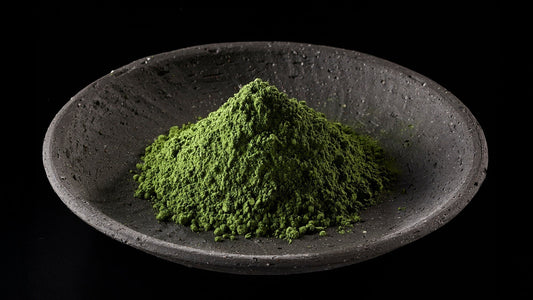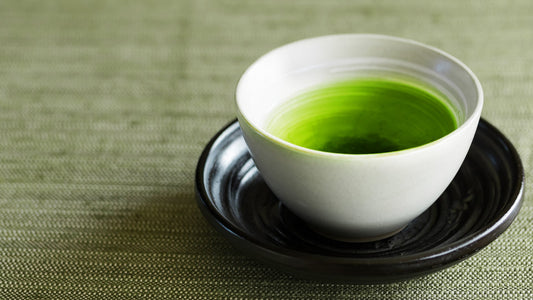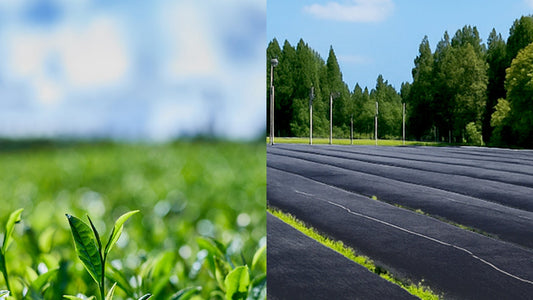With just one sip, this exceptional tea wraps you in warmth and instantly broadens your perspective, offering a moment of pure indulgence. Whether it's your first cup to awaken the senses, a pause during a busy workday, or a cherished moment shared with family and friends, tea possesses a mysterious power—gently infusing the body with calm and kindness.
Tea comes in a rich variety—green tea, black tea, pu-erh tea, and countless others—each enjoyed in its own unique way. While all teas begin with the leaves of the tea plant and are brought to life by the simple act of pouring hot water, one question remains: Where did tea originate, and how was it first discovered?
In this article, we invite you to explore the fascinating origins of your favorite tea and uncover the story behind Japanese tea, a tradition now captivating the world. Presented with care and clarity, we delve into how these beloved brews first came to be.
■ The Gentle Myth of Tea – The Origins of Japanese Tea

Over 5,000 years ago, during an era when human life revolved around hunting and fishing, a legendary figure emerged in the region of present-day Hubei Province, China. Known as Shennong, he tirelessly roamed the mountains and fields, sampling every unknown herb and wild plant he encountered—regardless of whether anyone had ever dared to consume them.
Through his fearless exploration, Shennong identified edible plants and imparted this invaluable knowledge to the people, laying the foundations for a deeper understanding of nature and survival. Each day, he tested dozens—sometimes hundreds—of different plants. Yet his dedication came at a grave cost: one day, he was struck down by the toxins of 72 different poisons, writhing in agony as a result of his relentless pursuit of wisdom.
At the brink of death, gasping for breath and barely clinging to life, he reached for a tender leaf exuding a fresh, uplifting fragrance. He placed it in his mouth and swallowed it.
That leaf was none other than the young bud of the tea plant.

The tender tea bud, once consumed, is said to have neutralized all 72 poisons within Shennong’s body, restoring his strength and reviving his spirit. With his health renewed, he resumed his quest to taste and catalog countless plants for the benefit of others—each time he encountered a poisonous one, he turned again to the tea leaf for its healing power.
From that moment on, the tea leaf became revered as a life-saving medicinal herb, gradually becoming an essential part of daily life.
The legend of Shennong, preserved in classical texts such as The Classic of Tea (Chajing) and other ancient writings, continues to echo through our lives today.
Though tea leaves once served as a miraculous antidote that purged the poisons from Shennong’s body and restored him to life, it would take several millennia for this revered medicinal herb to evolve into the beloved daily beverage we now know simply as tea.
■ From China to Japan: The Origins of Japanese Tea

In China, tea began as a form of medicine. It was more than 2,000 years ago that people first started boiling tea leaves to drink as a beverage.
At that time, tea was completely unknown in Japan. However, in the early 9th century, during the Tang Dynasty, a Japanese monk who had studied the Chinese tea preparation methods returned and presented a carefully brewed infusion to the Emperor as an offering of hospitality.
This moment is recognized as the earliest record of Japanese tea culture, documented in the historical chronicle Nihon Kōki (Later Chronicles of Japan).
Emperor Saga, who reigned at the time, was deeply impressed by the tea he was offered. So much so that he decreed tea cultivation to begin in Japan that very year, and ordered that tea be presented annually to the Imperial Court.
This moment marks the true beginning of Japanese tea.
In the early 800s, tea was introduced to Japan in the form of a Chinese preparation method: tea leaves were steamed, compressed into dense cakes, then broken into pieces and simmered with added salt when ready to drink. However, this style did not suit the Japanese palate and failed to gain popularity.
Over time, the method evolved naturally—steaming and simply drying fresh tea leaves, allowing them to be gently brewed as needed. This more delicate approach better aligned with Japanese tastes and sensibilities.
Nearly two centuries later, in 1191, the Zen monk Eisai became the first to introduce the Japanese people to the ways of tea and its health benefits. Having studied in China, he brought back the method of preparing powdered tea—matcha—which was then gaining popularity there.
This method quickly spread throughout Kyoto and Kamakura, laying the foundation for what would become the pinnacle of Japanese tea culture: chanoyu, the ceremonial art of tea. From this, Japanese tea culture flourished and evolved into a refined tradition of beauty and mindfulness.
How did the method of preparing matcha, introduced by revered Zen monks, evolve into chanoyu—the Japanese Way of Tea?
In the next section, “Ichigo Ichie: The Deeper Meaning Behind a Once-in-a-Lifetime Tea Gathering”, we explore the spirit of chanoyu and the art of sencha, revealing the profound intentions woven into each cup.









